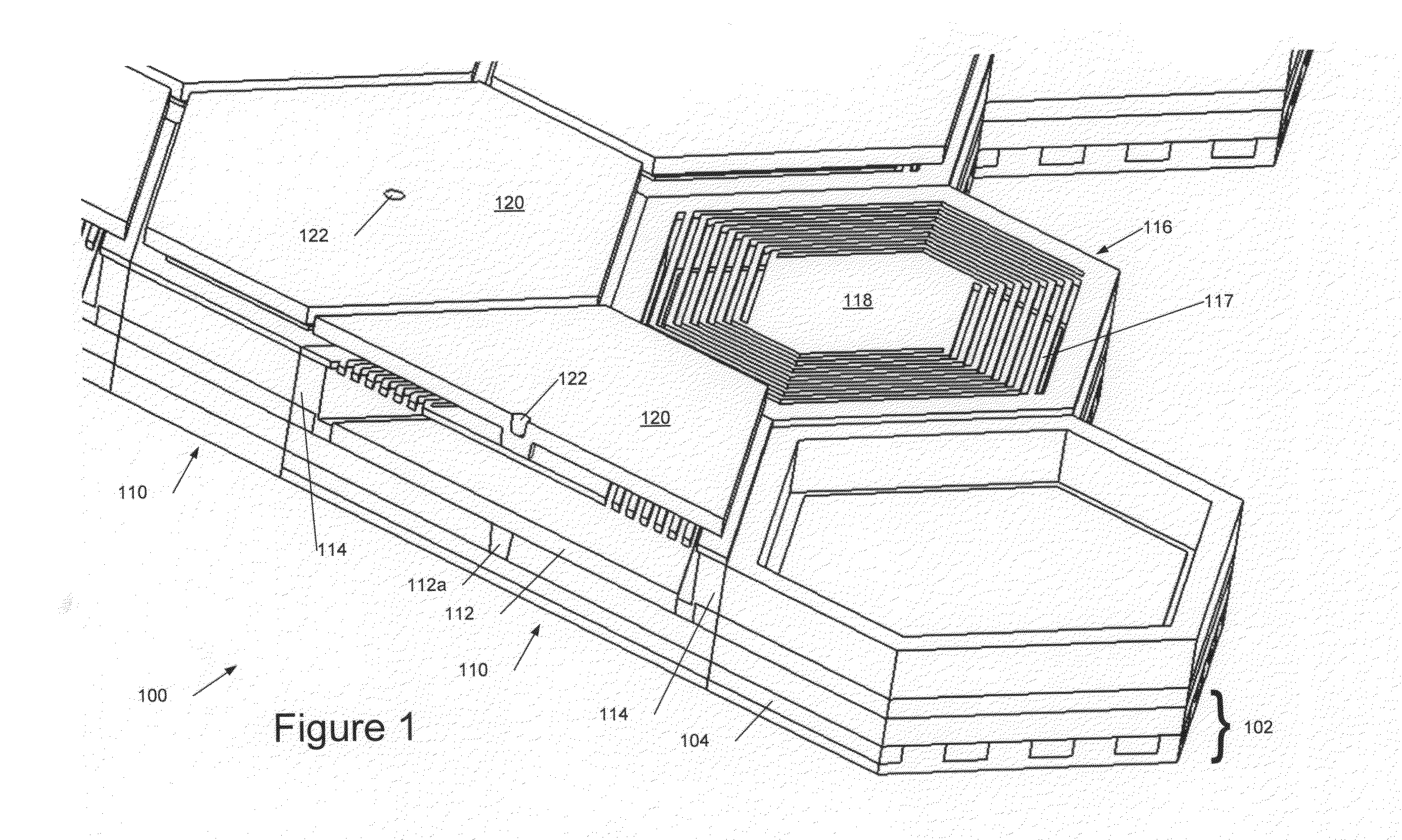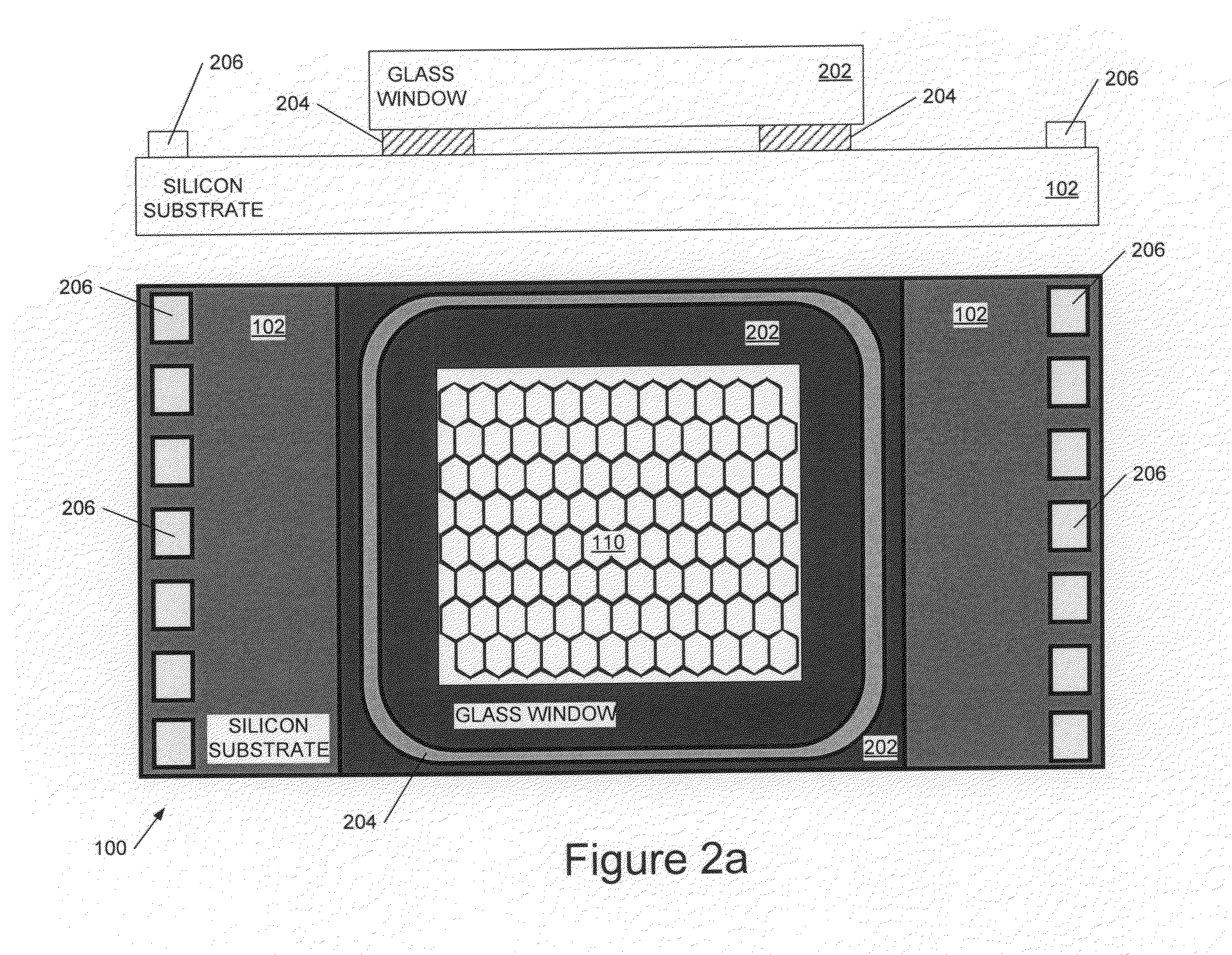Spatial Light Modulators and Fabrication Techniques
a technology of spatial light modulator and fabrication technique, which is applied in the direction of lamination ancillary operations, instruments, chemistry apparatus and processes, etc., can solve the problems of high cost of packaging die-level devices and tolerating raised temperatures, and achieve low cost, cost saving, and reduced device fabrication costs.
- Summary
- Abstract
- Description
- Claims
- Application Information
AI Technical Summary
Benefits of technology
Problems solved by technology
Method used
Image
Examples
Embodiment Construction
[0028]Referring first to FIG. 1, this shows a cutaway portion of an optical phase modulating MEMS SLM 100 prior to attaching a glass window over the MEMS pixels.
[0029]In the example of FIG. 12 each electrostatically-actuated pixel is approximately 10×10√{square root over (2)} μm and deflects over 400 nm when actuated with 1 volts, has 8 nm of deflection resolution, settles within 30 μs, and has the shape of an irregular hexagon. The mirror spring comprises a single crystal silicon (SCS) electromechanical flexure serving as both a spring / mirror mount and as a top electrode.
[0030]Thus in some preferred embodiments the SLM 100 comprises a substrate 102 bearing a plurality of SLM pixels 110. For display devices, individual addressing of mirror actuators is generally desirable, and this may be achieved by incorporating CMOS circuitry underneath each actuator. Thus substrate 102 is preferably a CMOS substrate and a bottom pixel electrode 112 may comprise a portion of an exposed top metal ...
PUM
| Property | Measurement | Unit |
|---|---|---|
| Temperature | aaaaa | aaaaa |
| Temperature | aaaaa | aaaaa |
| Pressure | aaaaa | aaaaa |
Abstract
Description
Claims
Application Information
 Login to View More
Login to View More - R&D
- Intellectual Property
- Life Sciences
- Materials
- Tech Scout
- Unparalleled Data Quality
- Higher Quality Content
- 60% Fewer Hallucinations
Browse by: Latest US Patents, China's latest patents, Technical Efficacy Thesaurus, Application Domain, Technology Topic, Popular Technical Reports.
© 2025 PatSnap. All rights reserved.Legal|Privacy policy|Modern Slavery Act Transparency Statement|Sitemap|About US| Contact US: help@patsnap.com



